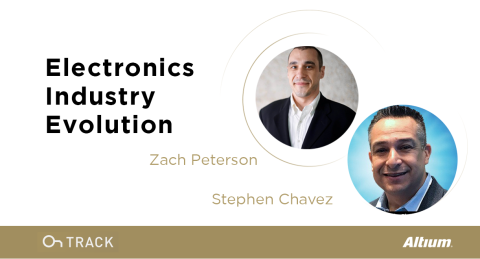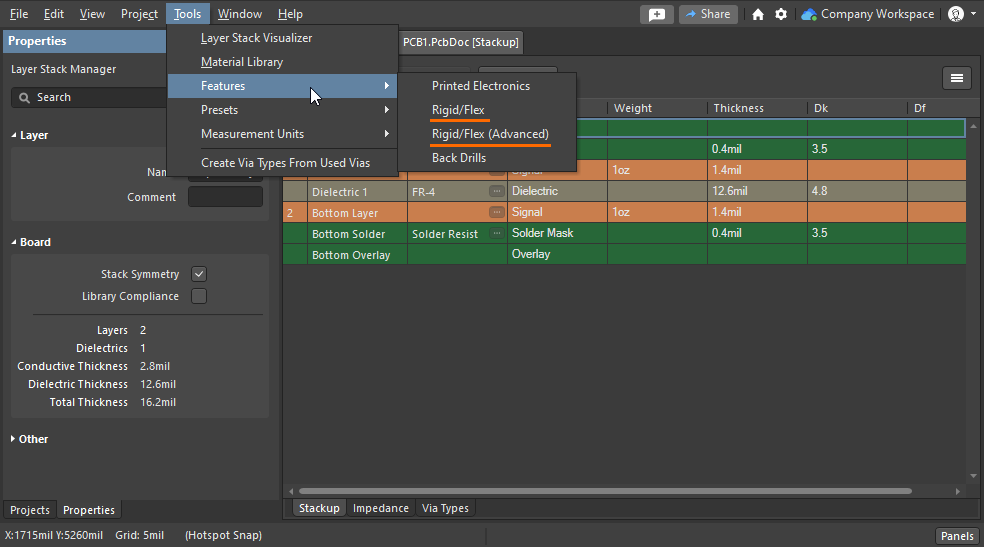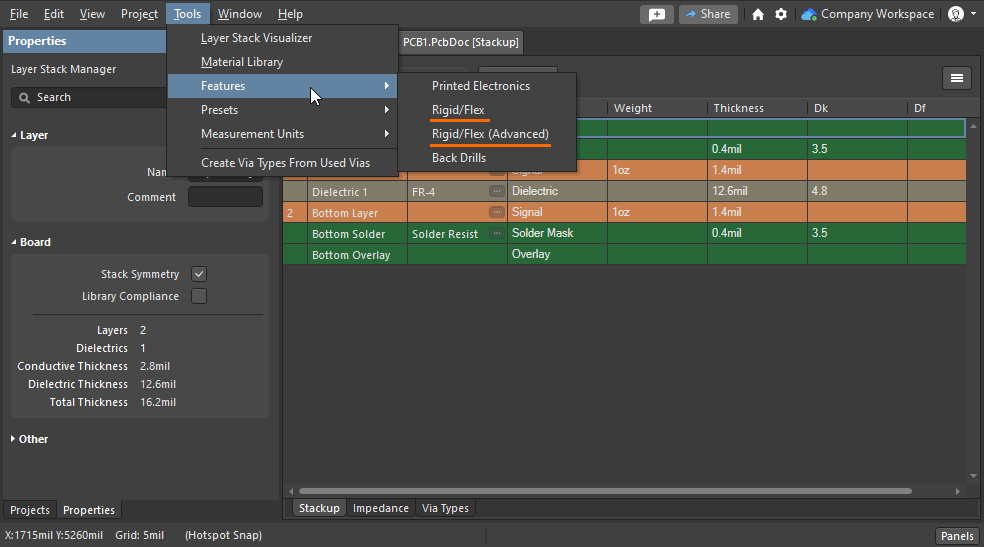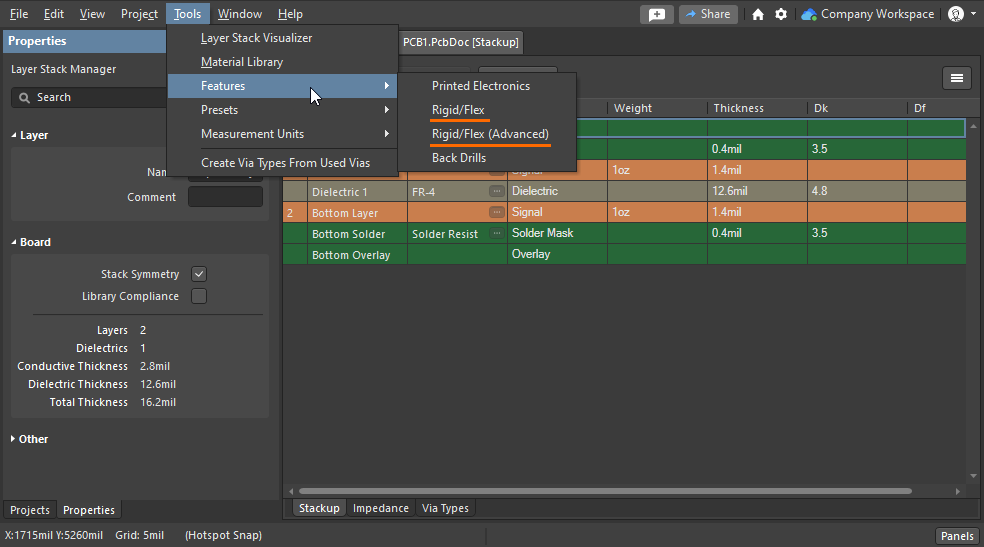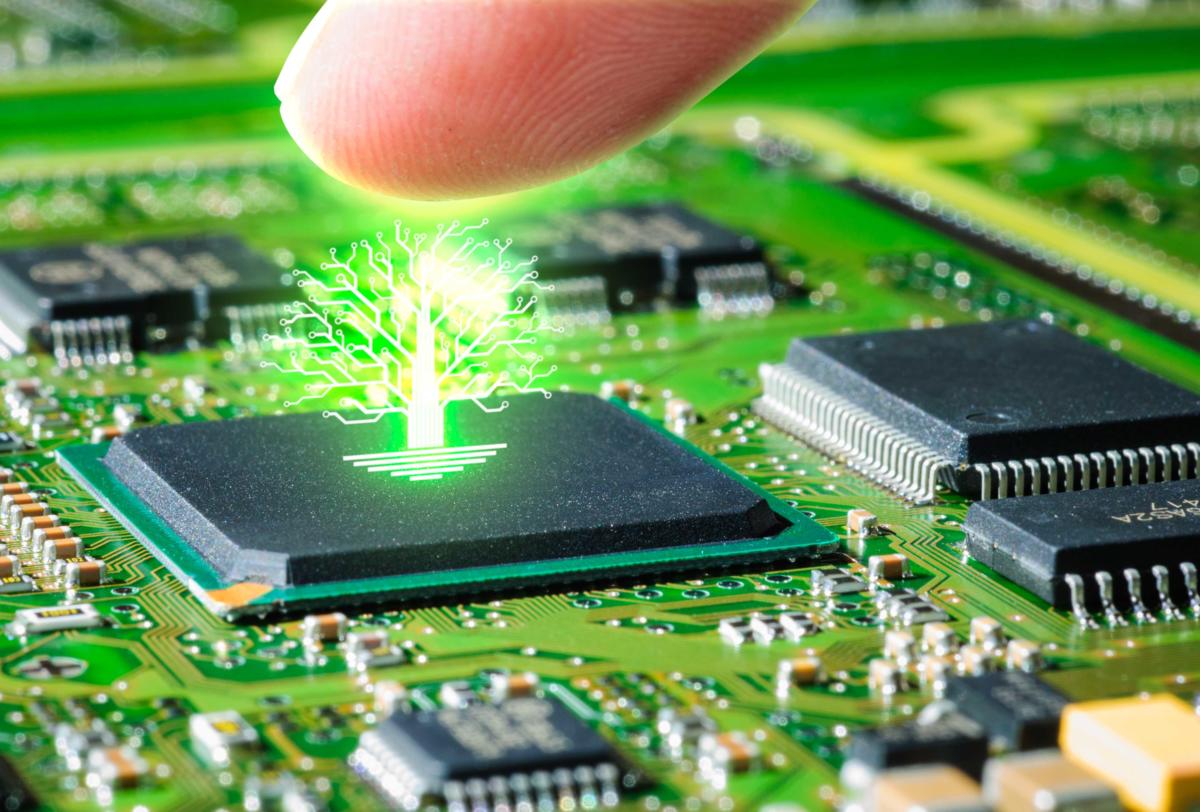PCB Motor Robots Creation with Carl Bugeja
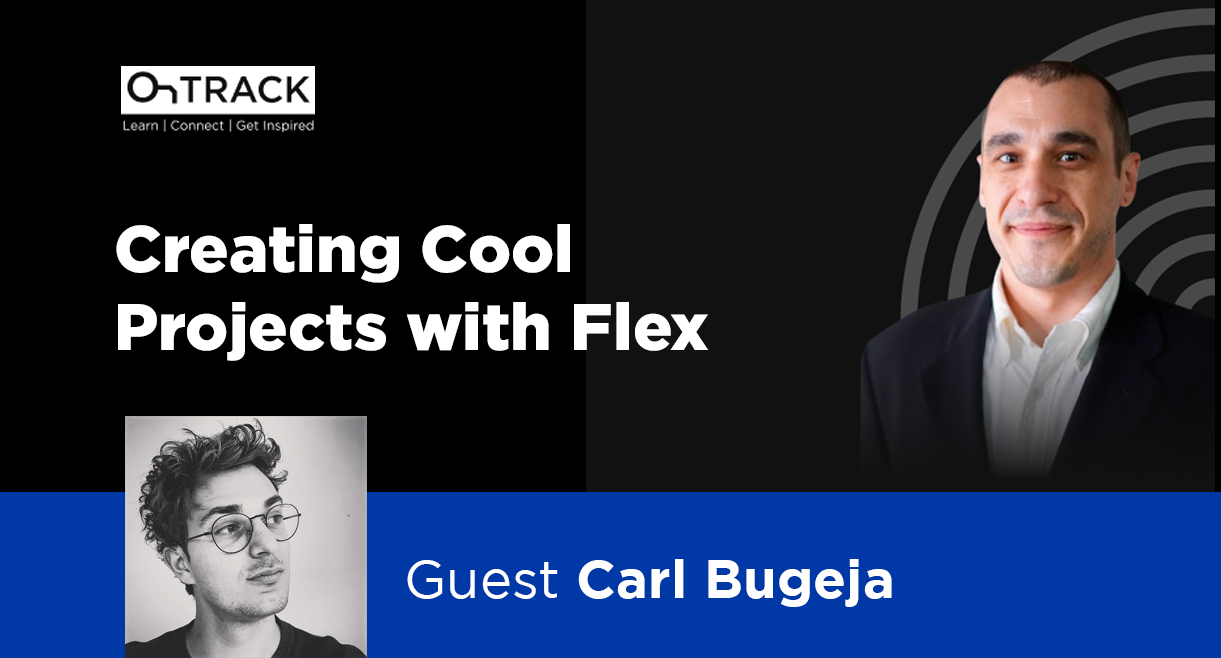
Table of Contents
In this episode, Carl Bugeja, an Electronics Engineer and a well-known Youtube Creator, talk about his experience designing electronics, how he started, and his fascination with inventing new things. He will also share some exciting robotics projects he is currently working on. Watch through the end, and make sure to check out the additional resources below.
Listen to the Podcast:
Download this episode (right click and save)
Watch the video:
Show Highlights:
- Carl's background in PCB and electronics design
- A startup with a friend, Carl designed cool stuff such as drones, bluetooth, and alarm techs
- He created and and documented his electronics projects which he started sharing on Youtube
- Carl first started using Altium Designer® when he was in his third year in the University, and love using it since then
- Carl shares his design process, and his approach to PCB design
- The first project that Carl shared on YouTube is a PCB Motor
- How PCB Motor project got started
- Soft robotics
- The benefits of using flexible PCBs
- There’s nothing you can’t do with a flexible PCB
- An opportunity to play around and create a new concept
- Trial and error is Carl’s way to learning and improving his skills with creating flex PCBs
- One of Carl’s most challenging project and most viewed video on Youtube is his Jumping PCB
- Check out Carl's recent projects
- Carl's firmware writing skills is acquired from his actual projects and work experience
- The importance of building a good relationship with your manufacturer
- Check out Carl Bugeja’s YouTube Channel here
Links and Resources:
- Watch Carl talks about why he love using Altium Designer®
- Connect with Carl Bugeja on LinkedIn
- Carl Bugeja’s YouTube Channel
- Carl Bugeja’s Hackaday Page
- Altium Designer Free Trial
Connect with Zack on LinkedIn
Full OnTrack Podcast Library
Altium Website
Download your Altium Designer Free Trial
Learn More about Altium Nexar
Claim the special offer for Podcast listeners only
Transcript:
Carl Bugeja:
That's the benefit of flexible PCBs, I think. That you are basically exposed to new ideas. When it comes to flexible there is nothing you cannot do. So basically it's like adding an extra dimension to PCBs.
Zach Peterson:
Hello everyone and welcome to the Altium On Track podcast. I am your host, Zach Peterson, and I am sitting down today with Carl Bugeja, a well known YouTuber and electronics engineer. He always does some interesting stuff with projects. And so we definitely want to talk to him today about some of his favorite stuff, some of his background, and how he got started doing what he is doing. So let's go ahead and get into it. Carl, thank you so much for sitting down with me this morning, actually it's morning for me. I'm sure it's afternoon for you because you're across the pond in Europe. So my timing is a little off because I just got turned to do an Altium live and it's three in the morning, but I'm still happy to be here talking to you because you're a pretty well known face on YouTube in the engineering community. And I also saw that you spoke a few times with the guys at Hacker Smith about some of your projects. So it was pretty cool.
Carl Bugeja:
So for anyone who don't know who I am, maybe I basically do electronics that's what I studied. And then I currently post YouTube videos about the project that I'm making.
Zach Peterson:
I thought some of them were pretty interesting and certainly some stuff that I would not have thought of, but maybe just for the audience, you can tell us your background a little deeper and then how you got into to PCB design-
Carl Bugeja:
Sure.
Zach Peterson:
... and electronics design.
Carl Bugeja:
So, so basically I studied electronics engineering at University of Malta. I graduated in 2016 and that's when I started designing PCBs. And then after graduation, I first started a startup with my friend, after a bit we stopped working on that startup and we're working on some cool project ideas like drones and Bluetooth, alarm techs and stuff like that. And then after nine months we ran into some financial problems and right after that, I basically started working. But my free time, I was still very into the robotic stuff. So I decided to start documenting everything and putting it on YouTube.
Zach Peterson:
How did you get started using Altium? Was Altium one of the first tools you used? did you maybe start learning with something like KiCad or a different program?
Carl Bugeja:
So back in my first year of engineering, they actually taught us a software that I don't think it exist today. It was called Proteus. Then in the third year I got introduced to Altium designer. I had a couple of lectures about it as well. And I also designed some interesting stuff during my university days with Altium and that's how I basically got started. Then I also used it in my automotive job for around three years. And that's basically how it got started.
Zach Peterson:
That's interesting. I think a lot of people get started on a free program or something like maybe like a like Proteus or something like that and then they move up to a more advanced program like Altium. How do you like approach a new project and what were some of your first projects that you created when you started doing YouTube videos?
Carl Bugeja:
So my project usually starts like me thinking about an idea for a couple of months and that's basically how every project got started. Me getting curious about something weird or something that doesn't exist. I think that's the way I approach a project. So basically it's stuck in my mind for around a month. And then when I figure out every little detail, I basically open Altium designer and start designing. I usually start with the layout and then schematics. Sorry, I usually start with the outline then schematics and then go through the layout. My first project that I posted a YouTube was the PCB motor. So basically it was based on the idea of having PCB coils printed on the PCB itself, which are used to actually rotate a rotor.
Zach Peterson:
I saw in quite a few of your videos, you were basically putting the coils for a motor onto a PCB and that's something I certainly never thought of. And I think you were talking to someone from Hacker Smith or not Hacker Smith Hackaday I should say. Yeah, Hackaday. One of the websites and you had mentioned putting this onto a board and then I didn't even think about it, but then stacking multiple layers to increase the turns density. And I thought that was really interesting. I mean, do you try and get really innovative like that with everything? Because I thought that was a really interesting way to actually do something that was essentially to create motion and you essentially just, powering it up with magnetic field, putting it in or another magnet.
Carl Bugeja:
So basically how that project got started like I said, I liked the idea of simplifying a drone. So at PCB motor was actually my first idea on how a drone could be simplified because you would obviously have everything integrated on one PCB. The idea didn't quite work out because the motors didn't generate enough thrust to be feasible and for it to be implemented on a drone. But as I've showed on my channel can be used for other things like maybe a wheel PCB robot. So I think to think about having a robot that from manufacturing point of view, it simplified and having the less amount of components possible. I find that very interesting.
Zach Peterson:
So with one of your projects and I noticed that you do quite a bit with robots and they'll fold, they'll be soft robots. And that's really interesting because soft robotics, I think is one of these things that's been talked about sometimes in the research literature or maybe you read about it in IEEE. I've never actually seen anything with soft robotics, but you actually doing it with flex elements-
Carl Bugeja:
I mean-
Zach Peterson:
... and some of the stuff that you built. And then I thought that was pretty interesting.
Carl Bugeja:
I don't think it's technically soft. It's considered as 100% soft robotics because you obviously need to have some rigid parts and you obviously need to have the magnets and stuff that, but I think it's an interesting concept that, I mean, I think there's few people researching right now.
Zach Peterson:
And then especially with making it foldable or making elements of it foldable it's which elements are best to become the soft portion of the system. And one other thing that I thought was interesting was like, I was scanning through YouTube channel and there was one little robot that looked like you were building that basically unfolds and then opens up and all of the circuit trees crammed inside of there. And it seems like if you go at the soft route, put everything on flex, you can really pack a lot more features and a lot more components into this really tiny package.
Carl Bugeja:
Sure.
Zach Peterson:
And then the thing pops open and just opens up and starts moving.
Carl Bugeja:
Sure. I mean that's the benefit of flexible piece of PCBs. I think that you are basically exposed to new ideas when it comes to flexible. There is nothing you cannot do. So basically it's like adding an extra dimension to PCBs. So I basically have some projects coming up that, I mean, for example, I have one that is about making a ball made out of LEDs. So that is something that is very hard to do with a flexible PCB. So flexible PCBs gives you a new way of playing more around and creating a concept that maybe was difficult to do with previous for PCBs
Zach Peterson:
Sure. I wonder, if you're someone who is maybe a hobbyist or maybe you don't need to do flex professionally, how does someone get started learning flex? What were some of the resources that you had available? Or did you actually just learn at university?
Carl Bugeja:
No. I mean, at university we never learned about flexible PCBs. The way I learned of the PCBs, I obviously made some on the internet and YouTube and stuff like that, but there's not a ton of information available. So I mean, it was basically trial and error. So I learned from my mistakes mainly.
Zach Peterson:
And then I ask because I run my own firm doing design, but I've never done flex that's been produced and manufactured for somebody. And so I think for someone who has never actually had to do a production grade and go take it in to get manufactured, it's you have to rely on somebody else to do the majority of the work or you have to try and figure out some resources to learn. But that's interesting that you're able to get in and figure it out and then use some of those flex elements actually as the mechanical element. And one thing I noticed in one of your projects that you had going on, it looked like you actually using the flex ribbon with a nearby magnet and I believe the electromagnet was built into the flex ribbon. So you essentially just power it up. It moves back and forth between two magnets.
Carl Bugeja:
So using-
Zach Peterson:
So that's interesting basically. Go ahead.
Carl Bugeja:
... there I was using the flex Taylor ribbon as an arm sort of, as a entire mechanism sort of.
Zach Peterson (12:59):
I mean, what are some of your most challenging types of projects? Is it flex stuff? Is it the really compact foldable stuff? What are some of the most challenging things that you've had to build?
Carl Bugeja:
I think one of the most challenging aspects that I face is making a design feasible sort of. For example, one of my popular videos on YouTube is about a jumping PCB. So basically version one was just an age bridge with a pacific oil and a magnet that actuates itself and jump. So, I mean, that sounds a very cool idea. But when you look at the feasibility aspect, I mean, it doesn't have a battery on board. It doesn't have a micro controller on board. And when I did put those things onto the PCB, obviously there's quite a bit of difference. So perhaps I think the most challenging aspect are the line between making a prototype or a concept and making something that can be actually manufactureable and feasible from a real life application point of view. For example, one of the challenges I face is the lipo batteries. My robots are usually very small and it's very hard to find batteries that are small and also have a large current capacity.
Zach Peterson:
And then I'm sure that they have to discharge fast enough in order to actually deliver the power needed, to give you enough thrust essentially to lift the board up as well as all the components. And so it sounds like the challenge there is not just the engineering of, how do I deliver power to an electromagnetic element, but then also, how do I minimize the weight here on the PCB and of all the other components?
Carl Bugeja:
I mean, with flexible PCBs, it tends to be quite light because, I mean, some of my PCBs are usually less than one gram, which flexible PCBs, I mean, will allow you to achieve that quite easily since they are less than 0.1 millimeter tech.
Zach Peterson:
Sure. And then, I mean, if you're taking a board you're essentially forcing it to jump on its own just by giving it some power. What's the control to make it land the way you want it to?
Carl Bugeja:
I mean, that's the challenging part.
Zach Peterson:
I mean, if it's just a flex ribbon it's attached to something. So the flex ribbon is just going to recoil and come back down, but what if you just had an isolated board and you try to make it jump?
Carl Bugeja:
I mean, that's, I mean the challenging part. Obviously you would need to some sensors there and try and control the way the feet land of the PCB.
Zach Peterson:
So that would've to be controlled, like with a micro controller or something like that.
Carl Bugeja:
Obviously.
Zach Peterson:
So for anyone who is interested maybe what are some resources that you use to learn how to program, to do embedded?
Carl Bugeja:
I mean, when I graduated I wasn't very good at writing firmware for my controllers, but I mean, the best way I think I learned from writing firmware is by doing a ton of project. In fact, I mean, I started as an electronic design engineer when I used to work full time. And then after a few months, I mean, I needed to switch to a trading firmware. So basically what I used to do before YouTube was writing firmware for some automotive switches and stuff like that. So I have some background on the firmware side of things as well.
Zach Peterson:
I will admit I'm not the best coder either. I mean, I can do some things in Python, but I have to rely on other people when it comes to writing firmware. So that's interesting. It sounds like you got some on the job experience and then maybe apply that over to some interesting stuff with projects.
Carl Bugeja:
I mean, I have some experience. I'm not an expert. But I mean with time it comes naturally I'm writing software. I mean, bugs are always necessary, but I mean it's part of the job.
Zach Peterson:
So what have you been working on lately? What are some of your most recent things that maybe haven't gone up on the YouTube channel?
Carl Bugeja:
So I'm currently working on a couple of things mainly for project. One of them, like I said, is the RGB ball. So I'm making, hopefully it'll work, a ping pong size RGB ball that has 242. It's going to be all made on one flexible PCB. So the flexible PCB itself will fold into a ball hopefully. Another project that I'm working on is flexible PCB heaters. I'm also doing some interesting stuff with that. Hopefully in the coming months. I will also investigate some wearable applications when it comes to flexible PCB heaters. And I'm also working on a new PCB robot that has four wheels and will be made just from one flexible PCB.
Zach Peterson:
So from a single flexible PCB for a robot with wheels. That's interesting because with the wheels, it sounds like you're going to have to take advantage of some kind of enclosure to mount all of that. And then you have to essentially put the flex PCB inside of that. Is that the approach?
Carl Bugeja:
Yeah.
Zach Peterson:
Because I mean, you need to keep those wheels essentially rigid somewhere.
Carl Bugeja:
So basically what I'm using is I'm using stiffeners as the outer shell of the robot.
Zach Peterson:
I see. So you're doing a rigid flex type of approach?
Carl Bugeja:
Yeah. Sort of. It's still a flexible PCB, but it has different type of stiffness. I mean, it has some FR4 stiffeners and some metal stiffeners at the bottom, which will hopefully keep everything rigid. And then where needed, there will be the flexible areas as well.
Zach Peterson:
So when you're starting with flex PCB and you have stiffeners, you said both FR4 and metal, is this the kind of thing where you do generally take the design to a preferred fabricator. And are you actually doing the assembly yourself or are you also doing assembly through somewhere external, like through doing it overseas or something?
Carl Bugeja:
The assembly, I usually do it myself. I enjoy doing it. And I think it makes the videos more interesting. Obviously for the PCB, the manufacturer just reviewed the design files and perhaps even gave some feedback, but that's it.
Zach Peterson:
So you're actually taking the manufacturer's feedback even on a hobby project. That's something we stress around here at Altium is designed with manufacturing. So take their feedback because they definitely want to help you be successful. And I know that I have to rely on manufacturers as well, even for simpler questions. And it's definitely an area of the industry that I have tried to learn quite a bit more about over the last year or so, just because having to put more things into manufacturing, it's really important to know how to deal with them, know how to talk to them, know what kind of resource they can be.
Carl Bugeja:
I think it's very important.
Zach Peterson:
It sounds like you do have to lean on your manufacturer.
Carl Bugeja:
I think it's very important to build a good relationship with your manufacturer.
Zach Peterson:
Definitely. And do you have one or two preferred ones that you use, do you just shop around by price? Because I mean, I know with hobby projects you probably don't have infinite budget and I mean, it's understandable. For some of the hobby stuff that I've done I'm not [inaudible 00:22:54] into it.
Carl Bugeja:
I mean, for me, obviously some of my, I mean, all of my PCBs are usually sponsored by a specific manufacturer. So over the years I build quite a good relationship with them. And I mean, I recommend them so well.
Zach Peterson:
That's cool. You get to form a relationship and then I'm sure they get some exposure on the channel. Well, that's very cool. Well, what we're going to do is in the show notes, we're actually going to link to your channel. Maybe I can follow up with you before this goes out and maybe you can give me a few links to some of your videos for some projects that you personally find most interesting or most challenging. I think the audience would enjoy that. What do you think?
Carl Bugeja:
Sure.
Zach Peterson:
Great. Well, Carl, it's been really great to talk to you and I hope the audience goes and checks out your channel and gets inspired by some of the really interesting designs that you've done. Because when I first reviewed your channel I was looking around and I thought, "Wow, I had never thought to build a board like that or I'd never thought to build a little robot like that." But it seems like your mind is just in a different spot in terms of some of the designs that you've done. So that's really cool.
Carl Bugeja:
Thank you very much.
Zach Peterson:
So I think we're going to wrap it up there. Everybody please go look in the show notes and go to Carl Bugeja's channel, excuse me, and check out some of his great videos and learn all you can. I hope someone will get some interesting design ideas from watching your videos because I do think you're very interesting.
Carl Bugeja:
Well, I mean, my projects are all open source, so if somebody would like to-
Zach Peterson:
That's true. They are all open source.
Carl Bugeja:
If they would like to continue experiment perhaps on some project or they have some other ideas they'd like to try, they can also visit the open source files.
Zach Peterson:
That's a great idea. And I'll admit sometimes I'm not a fan of open source just because having to do commercial stuff, everyone wants their own IP and they want it to be private, but for what you're doing that's awesome that they're open source and people can get in and participate.
Carl Bugeja:
I mean the open source committee is always growing, so I truly believe in it and I think it's the future.
Zach Peterson (25:28):
Do you ever start a new design starting with open source? Are you also someone that'll take a design clone it?
Carl Bugeja:
I don't use-
Zach Peterson:
You're going to totally change it so that there's something new.
Carl Bugeja:
I don't usually do that mainly because when I start a new project, I like to start from like step one. Even from code, for example, it's hard for me for example to use somebody's as code because you will miss some features, but I mean just for tiring out something it's I mean, it's magic.
Zach Peterson:
Well what we'll do is in the show notes, we'll actually link to your GitHub page.
Carl Bugeja:
Sure.
Zach Peterson:
So hopefully people can go there and access some of your projects. I actually have your GitHub page open on another tab. So we'll definitely link there and people can check out some of the work you've done. So Carl, thank you again so much for taking some time to talk to us. Everybody in the audience, make sure to check out the show notes, go check out Carl's channel, make sure to go visit his GitHub page if you're looking for some interesting resources and we hope to see you again, next time for the next episode of the podcast. Don't stop learning and of course stay OnTrack. Thanks everybody.


